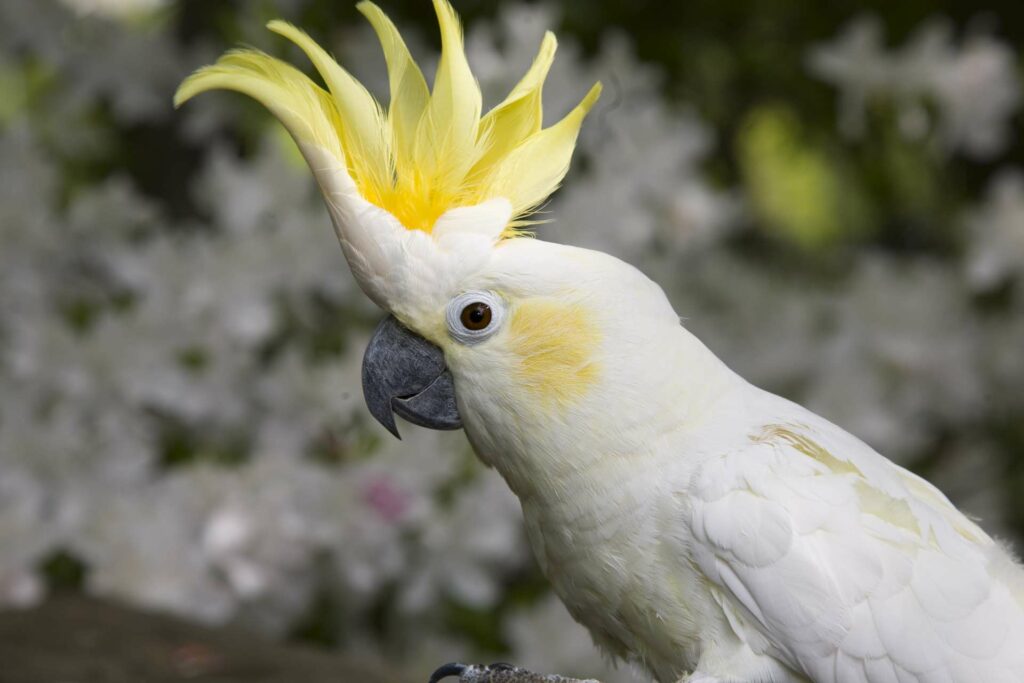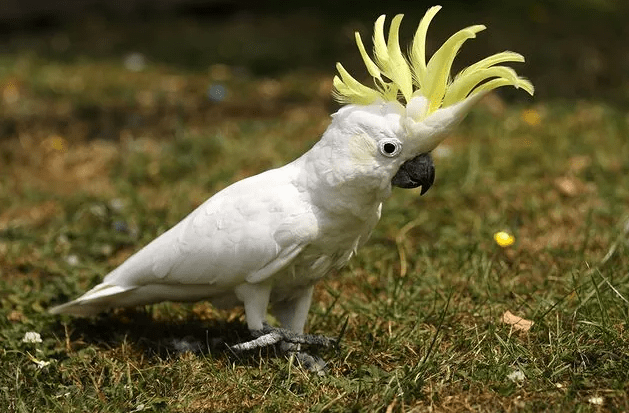As the name implies, this Cockatoo have specific yellow colour on their crest. People easily confused between the Yellow-crested Cockatoo with the larger and more common Sulphur-crested Cockatoo.
Let’s read through the following article below to find more about the Yellow-crested Cockatoo!
Habitat

The Yellow-crested Cockatoo (Cacatua sulphurea) is native to East Timor and Indonesia’s islands of Sulawesi Island and The Lesser Sundas. They inhabits forest, forest edge, scrub and cultivated areas from sea-level up to about 1500 meters.
Short Description

Have a medium-sized body (about 34-cm-long), they usually has white plumage, and on its head is a yellow crest that curves forwards. Its wings and tail on the undersides are also yellow, its bill is black, and the skin around their eyes is bluish. Females have reddish-brown eyes and males have black eyes. Compared to sulphur-crested cockatoo, yellow-crested cockatoo have brighter yellow color, closer to orange on their crests.
Behaviours
Here are some unique about the Yellow-crested Cockatoo, and why you should pay them a visit. First, when they are excited, those feathers will stand up backwards! They also great at mimicry, this is one of the reasons people enjoy keeping them as pets. However, the pet trade is putting enormous pressure on wild populations.

This birds’ diet consists mainly of seeds, buds, fruits, nuts, and herbaceous plants. Live in small flocks or pair, they usually build a nests in tree cavities. They are a monogamous birds, means pairs stay together in life! The eggs are white and usually two in a clutch, with 28 days of incubations.
Conservation Status
Currently, they listed as “Critically Endangered” according to IUCN Red List. The main threats to the Yellow-crested Cockatoo are the pet trade, in terms of unsustainable over-exploitation, and habitat loss. The total population of Yellow-crested cockatoos is fewer than 7,000 individuals (including 1,500-7,000 mature individuals) according to IUCN.
Let’s give your support to protect these beautiful birds together with Bali Safari Park!






